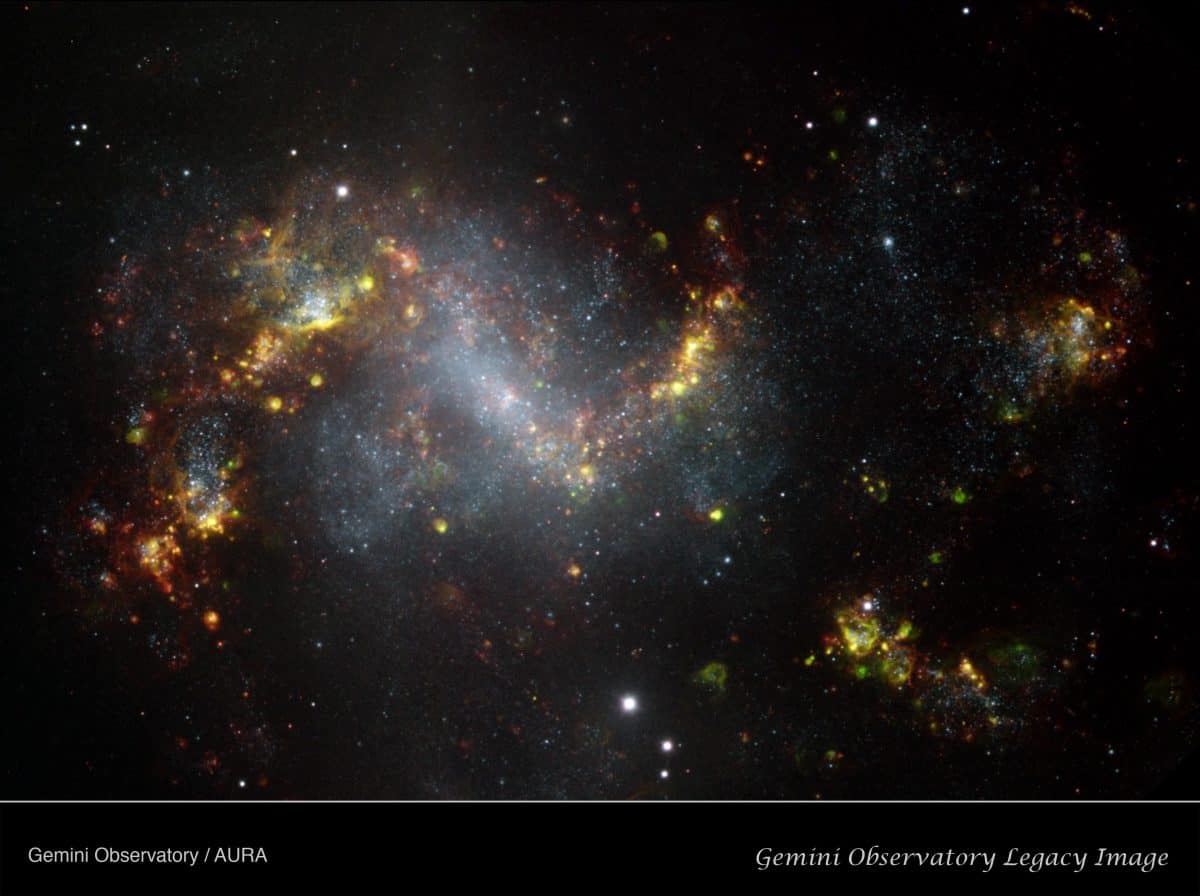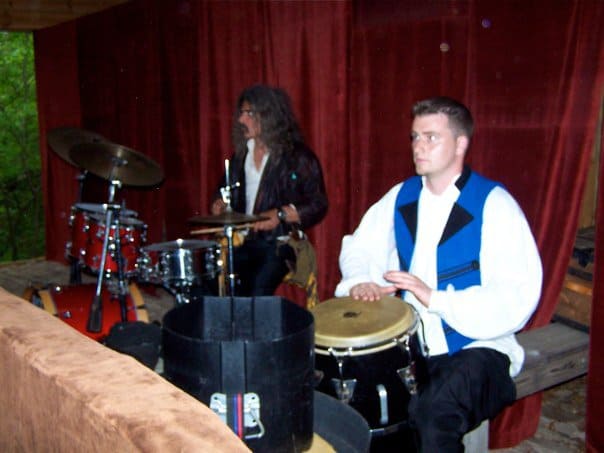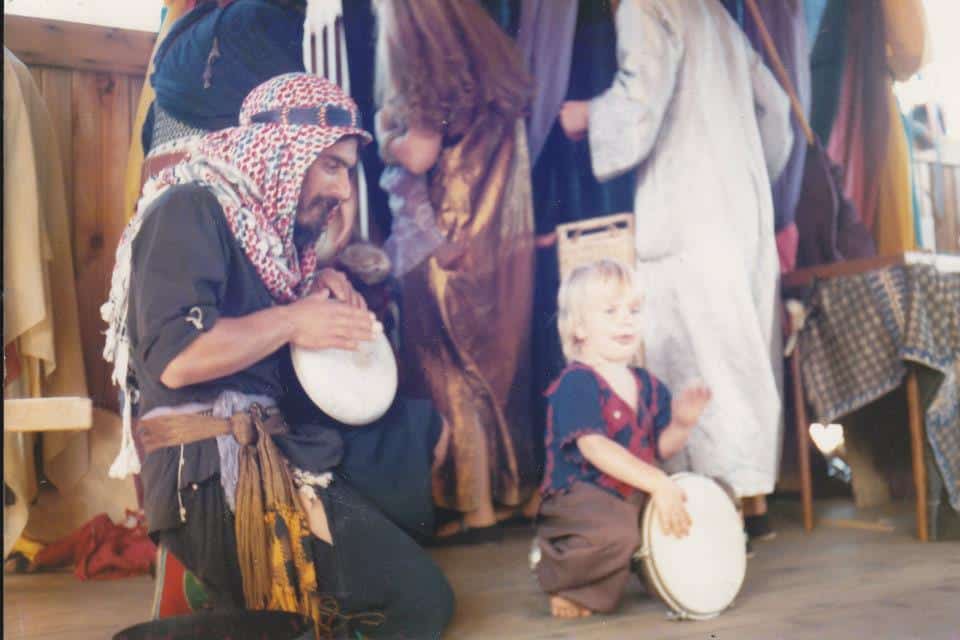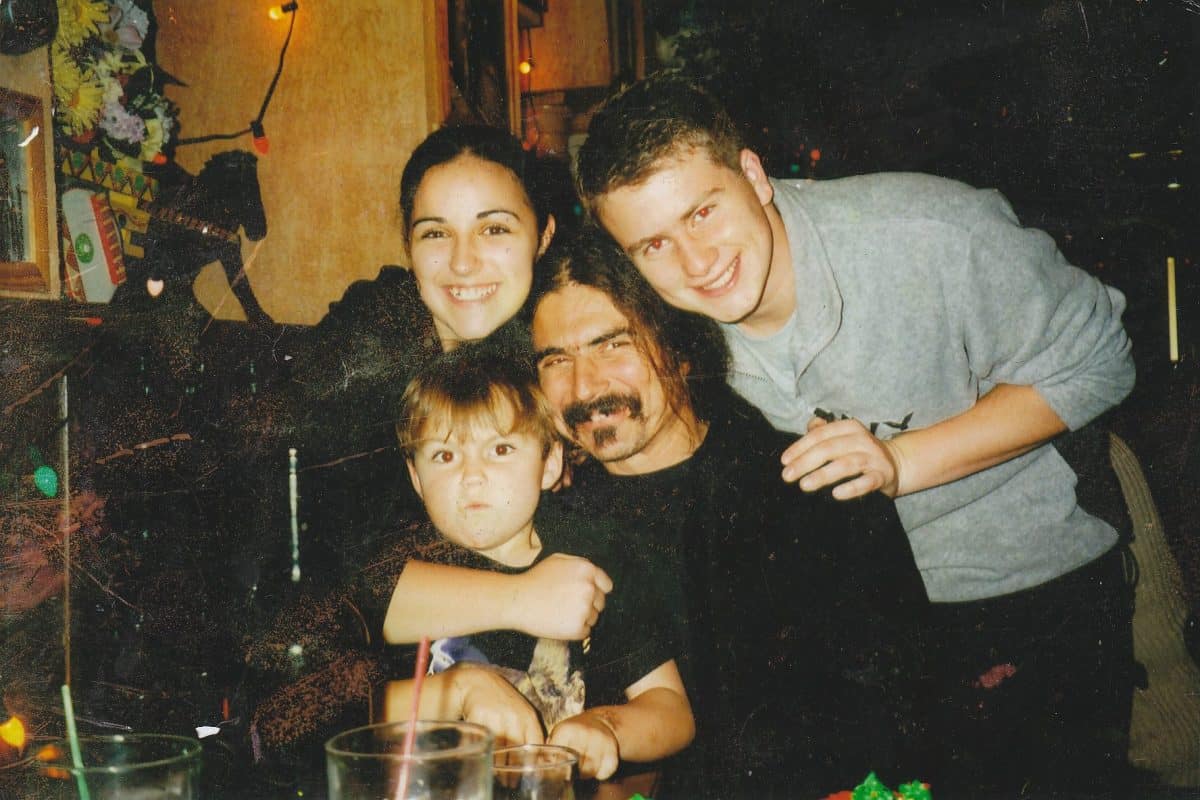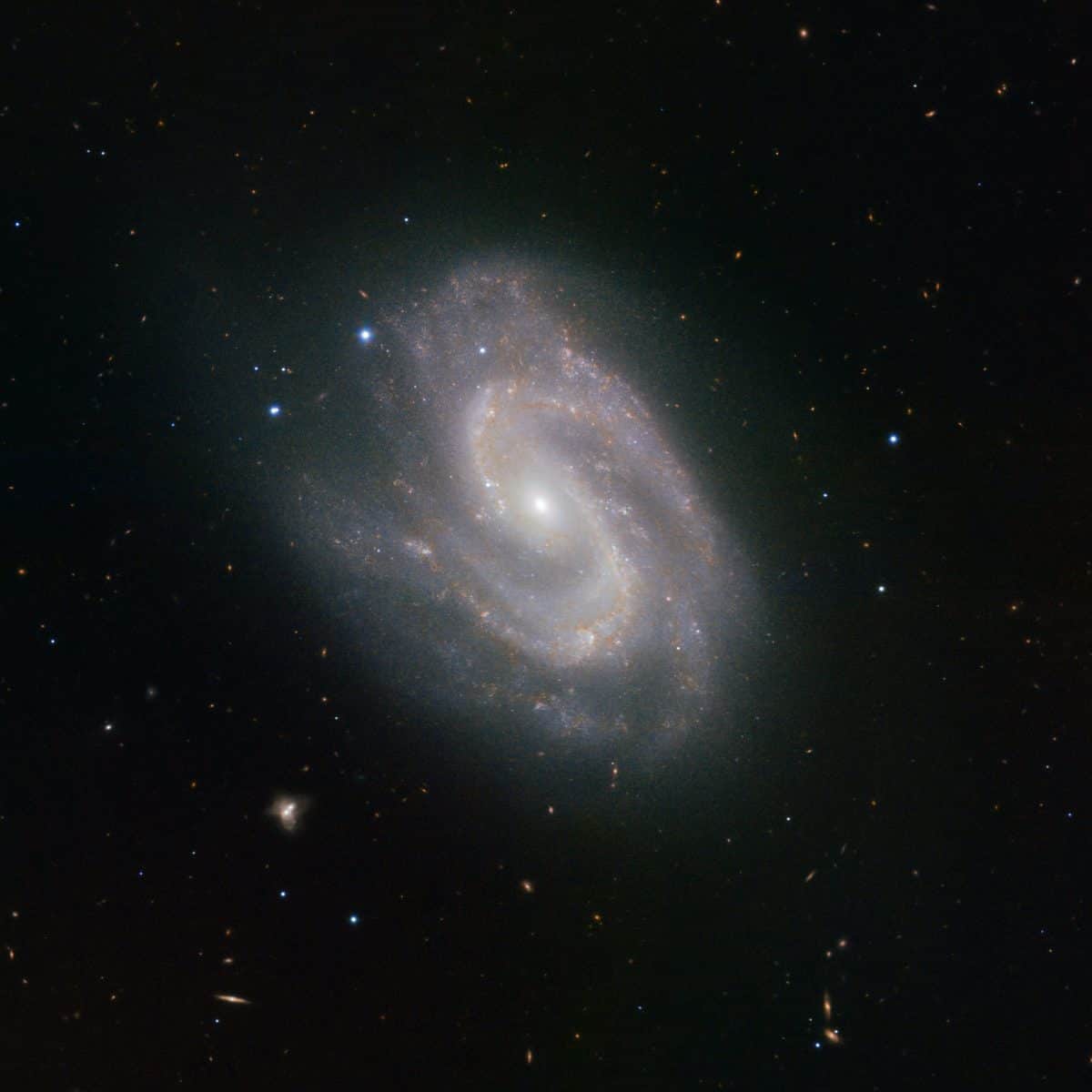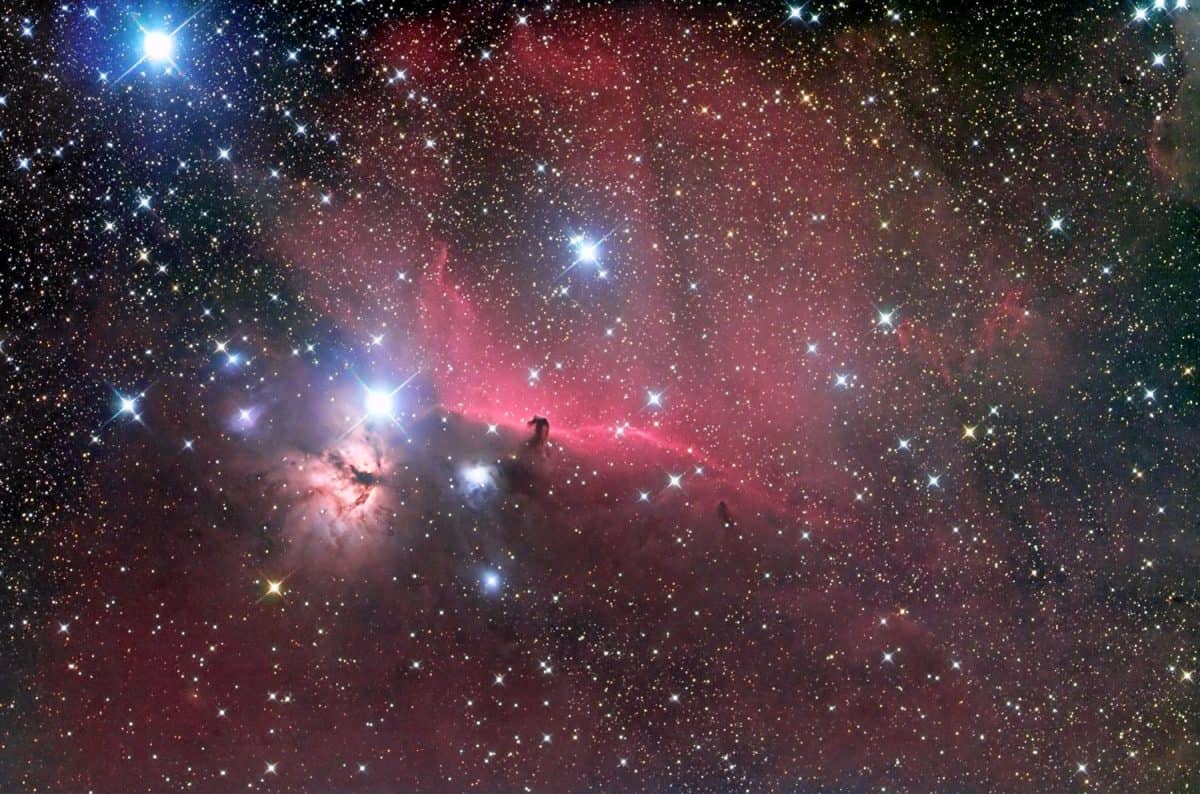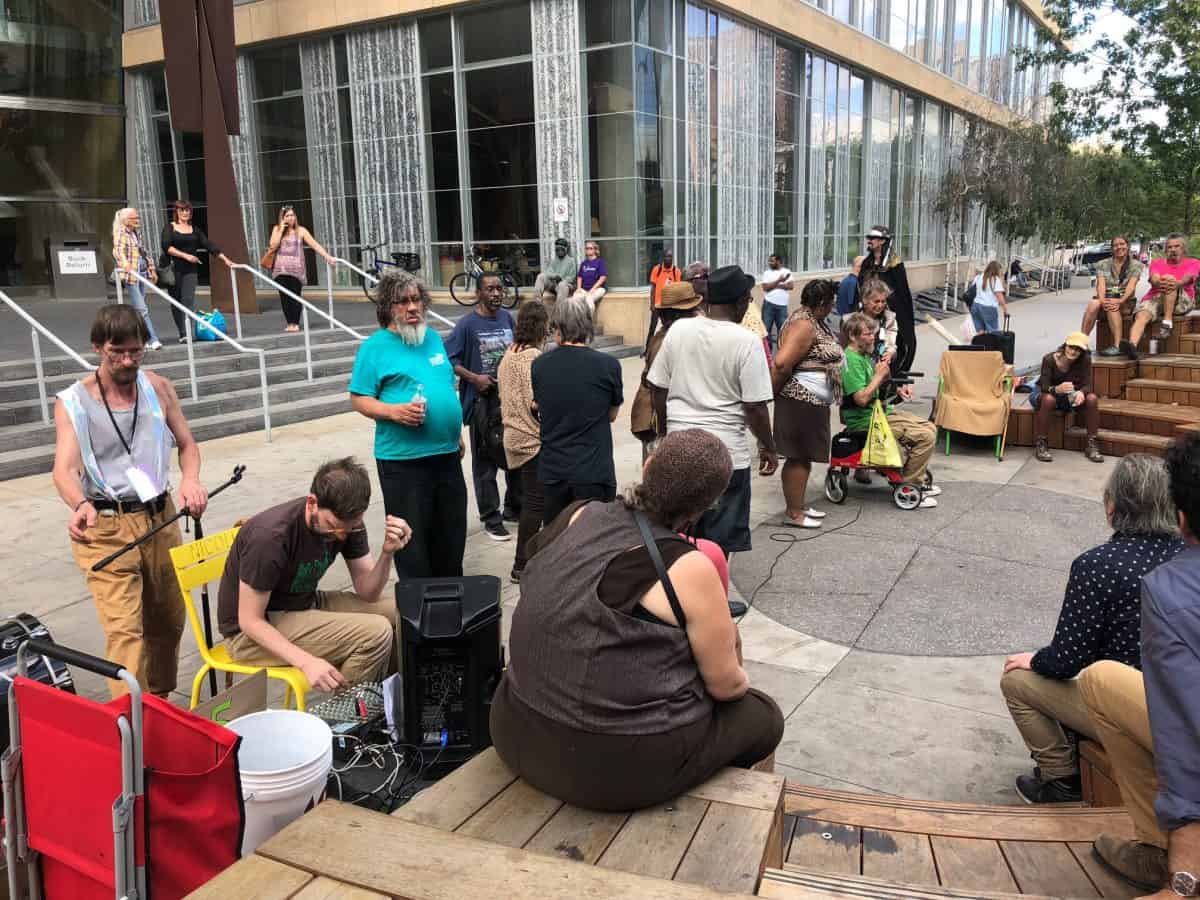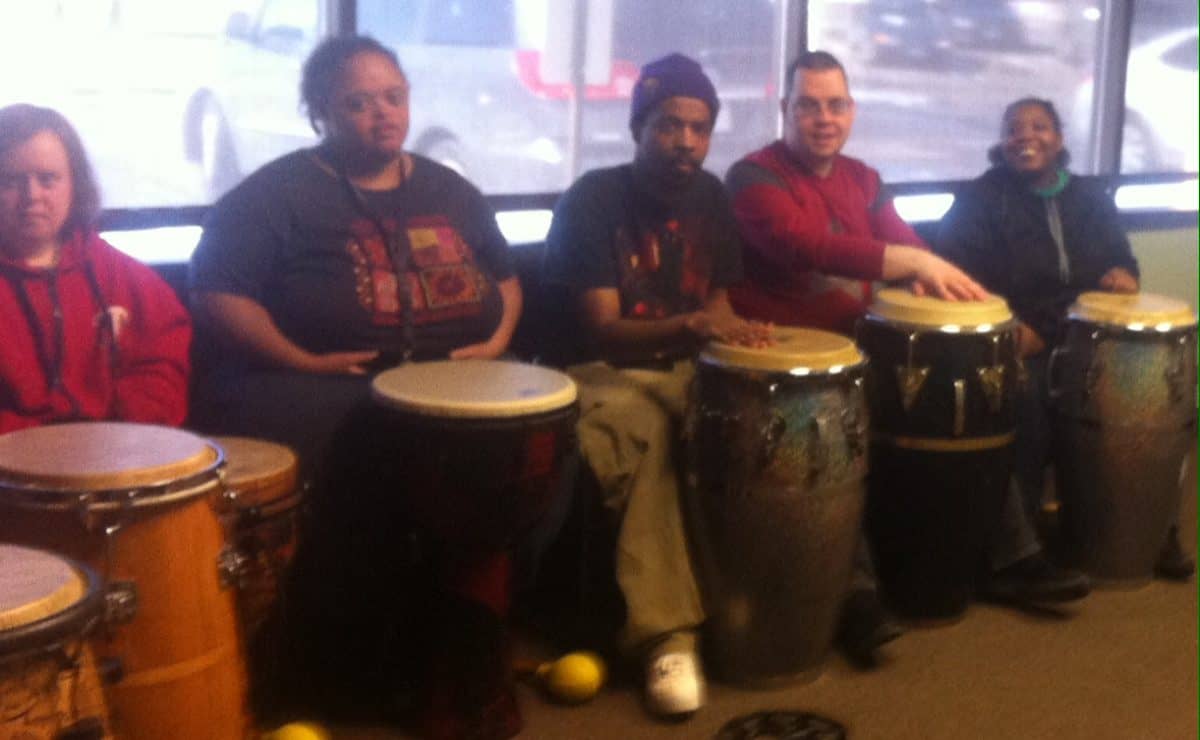Blog
NGC 1313 (also known as the Topsy Turvy Galaxy) is a field galaxy and a barred spiral galaxy discovered by the Scottish astronomerJames Dunlop on 27 September 1826. It has a diameter of about 50,000 light-years, or about half the size of the Milky Way.
NGC 1313 lies within the Virgo Supercluster.
NGC 1313 has a strikingly uneven shape and its axis of rotation is not exactly in its centre. NGC 1313 also shows strong starburst activity[9]and associated supershells. NGC 1313 is dominated by scattered patches of intense star formation, which gives the galaxy a rather ragged appearance. The uneven shape, the ragged appearance and the strong starburst can all be explained by a galactic collision in the past.However, NGC 1313 seems to be an isolated galaxy and has no direct neighbours. Therefore, it is not clear whether it has swallowed a small companion in its past.
Observations has shown that young, blue stars are scattered across the galaxy. This is evidence of infant mortality in which the young open clusters quickly became gravitationally “unglued” and scattered their resident stars into the galaxy. The galaxy bears some resemblance to the Magellanic Clouds and hosts two ultraluminous X-ray sources, called NGC 1313 X-1 and X-2. The former is a rare intermediate-mass black hole.
more...
Jean-Luc Ponty (born 29 September 1942) is a French jazz violinist and composer.
Ponty was born into a family of classical musicians on 29 September 1942 in Avranches, France. His father taught violin, his mother taught piano. At sixteen, he was admitted to the Conservatoire National Supérieur de Musique de Paris, graduating two years later with the institution’s highest honor, Premier Prix (first prize). In turn, he was immediately hired by one of the major symphony orchestras, Concerts Lamoureux, in which he played for three years.
At first, the violin proved to be a handicap; few at the time viewed the instrument as having a legitimate place in the modern jazz vocabulary. With a powerful sound that eschewed vibrato, Ponty distinguished himself with be-bop-era phrasings and a punchy style influenced more by horn players than by anything previously tried on the violin; no one had yet heard anything quite like Ponty’s playing. Critics said then that he was the first jazz violinist to be as exciting as a saxophonist.[citation needed] Ponty’s notoriety grew by leaps and in 1964 at age 22 he released his debut solo albumfor Philips, Jazz Long Playing. Then a 1966 live album called Violin Summit united Ponty playing live in Basel, Switzerland on stage with such notable string players as Svend Asmussen, Stéphane Grappelli and Stuff Smith.
John Lewis of The Modern Jazz Quartet invited Ponty to perform at the Monterey Jazz Festival in 1967, which led to a U.S. recording contract with the World Pacific label and the albums Electric Connection with the Gerald Wilson Big Band and Jean-Luc Ponty Experience with the George Duke Trio. That year also brought Sunday Walk, the first collaboration between Niels-Henning Orsted Pedersen and Ponty. Through the late 60s and early 70s and throughout jazz-loving Europe, Ponty achieved mounting critical praise and ongoing popularity.
more...Jerry Lee Lewis (born September 29, 1935 Ferriday, LA) is an American singer-songwriter, musician, and pianist, often known by his nickname, The Killer. He has been described as “rock & roll’s first great wild man.”
A pioneer of rock and roll and rockabilly music, Lewis made his first recordings in 1956 at Sun Records in Memphis. “Crazy Arms” sold 300,000 copies in the South, but it was his 1957 hit “Whole Lotta Shakin’ Goin’ On” that shot Lewis to fame worldwide. He followed this with “Great Balls of Fire“, “Breathless” and “High School Confidential“. However, Lewis’s rock and roll career faltered in the wake of his marriage to his 13-year-old cousin.
He had minimal success in the charts following the scandal, and his popularity quickly eroded. His live performance fees plummeted from $10,000 per night to $250. In the meantime he was determined to gain back some of his popularity. In the early 1960s, he did not have much chart success, with few exceptions, such as a remake of Ray Charles‘s “What’d I Say“. His live performances at this time were increasingly wild and energetic. His 1964 live album Live at the Star Club, Hamburg is regarded by music journalists and fans as one of the wildest and greatest live rock albums ever.[6][7][8][9][10] In 1968, Lewis made a transition into country music and had hits with songs such as “Another Place, Another Time“. This reignited his career, and throughout the late 1960s and 1970s he regularly topped the country-western charts; throughout his seven-decade career, Lewis has had 30 songs reach the top 10 on the “Billboard Country and Western Chart“. His No. 1 country hits included “To Make Love Sweeter for You“, “There Must Be More to Love Than This“, “Would You Take Another Chance on Me“, and “Me and Bobby McGee“.
more...Djelimady Tounkara was the lead guitarist in the super rail band, Mali’s other standout Dance band of the 1970s and 1980s, with Manfila Kante’s cousin, Mory Kante as their front man, after Salif Keita had left to join Les Ambassadeurs Internationaux. Another creative and innovative guitarist, he similarly translated lines that could be played on the balafon to his electric guitar.
more...Happy Birthday Mario 9-28-83 my first child.
Performing at the Chippewa Valley Renaissance Festival with Dad in 2010, Mn Renaissance 1988, Dads birthday dinner at Boca Italiano 2001!
more...
Performing for Shabbat for the Soul Service at Mt Zion Temple St Paul, MN Friday 9-28-18 730pm
more...NGC 157 is a spiral galaxy in the constellation of Cetus. The compiler of the New General Catalogue, John Louis Emil Dreyer noted that NGC 157 was “pretty bright, large, extended, between 2 considerably bright stars”. It was discovered on December 13, 1783 by William Herschel.
76.3 MLY
more...Kenneth David “Kenny” Kirkland (September 28, 1955 – November 12, 1998) was an American pianist/keyboardist.
Born in Brooklyn, New York in 1955, Kirkland was six when he first sat down at a piano keyboard. After years of Catholic schooling, Kirkland enrolled at the Manhattan School of Music, where he studied classical piano performance, classical theory and composition.
Kirkland’s first professional work came with Polish fusion violinist Michal Urbaniak, touring throughout Europe with his group in 1977. Coincidentally, his next high-profile gig was with another Eastern European jazz émigré, Miroslav Vitous. Kirkland is featured on Vitous’ ECM recordings First Meeting and Miroslav Vitous Group.
more...Koko Taylor (born Cora Anna Walton, September 28, 1928 – June 3, 2009) was an American singer whose style encompassed many genres, including Chicago blues, electric blues, rhythm and blues and soul blues. She was sometimes called “The Queen of the Blues.” She was known for her rough, powerful vocals and traditional blues stylings. Her name was sometimes styled KoKo Taylor.
Born on a farm near Memphis, Tennessee, Taylor was the daughter of a sharecropper. She left Tennessee for Chicago in 1952 with her husband, Robert “Pops” Taylor, a truck driver. In the late 1950s she began singing in blues clubs in Chicago. She was spotted by Willie Dixon in 1962, and this led to more opportunities for performing and her first recording contract, in 1965, with Checker Records, a label owned by Chess Records, for which she recorded “Wang Dang Doodle“, a song written by Dixon and recorded by Howlin’ Wolf five years earlier. The record became a hit, reaching number four on the R&B chart and number 58 on the pop chart in 1966, and selling a million copies. She recorded several versions of the song over the years, including a live rendition at the 1967 American Folk Blues Festival, with the harmonica player Little Walter and the guitarist Hound Dog Taylor. Her subsequent recordings, both original songs and covers, did not achieve as much success on the charts.
more...John Gilmore (September 28, 1931 – August 20, 1995) was an avant-garde jazz saxophonist known for his tenure with keyboardist/bandleader Sun Ra from the 1950s to the 1990s.
Gilmore grew up in Chicago and played clarinet from the age of 14. He took up the tenor saxophone while serving in the United States Air Forcefrom 1948 to 1952, then pursued a musical career, playing briefly with pianist Earl Hines before encountering Sun Ra in 1953.
For the next four decades, Gilmore recorded and performed almost exclusively with Sun Ra. This was puzzling to some, who noted Gilmore’s talent, and thought he could be a major star like John Coltrane or Sonny Rollins. Despite being five years older than Gilmore, Coltrane was impressed with his playing, and took informal lessons from Gilmore in the late 1950s. Coltrane’s epochal, proto–free jazz “Chasin’ the Trane” was inspired partly by Gilmore’s sound.
In 1957 he co-led with Clifford Jordan a Blue Note session which resulted in the album Blowing in from Chicago. The rhythm section featured Horace Silver, Curly Russell, and Art Blakey. In the mid-1960s, Gilmore toured with the Jazz Messengers and he participated in recording sessions with Paul Bley, Andrew Hill (Andrew!!! and Compulsion), Pete La Roca (Turkish Women at the Bath), McCoy Tyner (Today and Tomorrow) and a handful of others. In 1970 he co-led a recording with Jamaican trumpeter Dizzy Reece. His main focus throughout, however, remained with the Sun Ra Arkestra.
more...World Music on Flamenco Fridays with Rafael Riqueni: Y Enamorarse (Alegrías)
Alegrías (Spanish pronunciation: [aleˈɣɾi.as]) is a flamenco palo or musical form, which has a rhythm consisting of 12 beats. It is similar to Soleares. Its beat emphasis is as follows: 1 2 [3] 4 5 [6] 7 [8]9 [10] 11 [12]. Alegrías originated in Cádiz. Alegrías belongs to the group of palos called Cantiñas and it is usually played in a lively rhythm (120-170 beats per minute). The livelier speeds are chosen for dancing, while quieter rhythms are preferred for the song alone.
One of the structurally strictest forms of flamenco, a traditional dance in alegrías must contain each of the following sections: a salida (entrance), paseo (walkaround), silencio (similar to an adagio in ballet), castellana (upbeat section) zapateado (Literally “a tap of the foot”) and bulerías. This structure though, is not followed when alegrías are sung as a standalone song (with no dancing). In that case, the stanzas are combined freely, sometimes together with other types of cantiñas.
Recommended listenings for this palo include most singers from Cádiz, like Chano Lobato, La Perla de Cádiz, Aurelio Sellé, but also general singers like Manolo Caracol or La Niña de los Peines.
Also, you can listen “Mar Amargo” from Camarón and “La Tarde es Caramelo” from Vicente Amigo.
It is one of the cante chico forms of flamenco. The word Alegrías literally means “joys.”
more...IC 434 is a bright emission nebula in the constellation Orion. It was discovered on February 1, 1786 by William Herschel. The Horsehead Nebula is a dark nebula silhouetted against it.
1,500 ly from earth.
more...Robert Roland Chudnick (September 27, 1927 – May 27, 1994), known professionally as Red Rodney, was an American jazz trumpeter.
Born in Philadelphia, Pennsylvania, he became a professional musician at 15, working in the mid-1940s for the big bands of Jerry Wald, Jimmy Dorsey, Georgie Auld, Elliot Lawrence, Benny Goodman, and Les Brown. He was inspired by hearing Dizzy Gillespie and Charlie Parker to change his style to bebop, moving on to play with Claude Thornhill, Gene Krupa, and Woody Herman.
He accepted an invitation from Charlie Parker to join his quintet. and was a member of the band from 1949–1951. As the only white member of the group, he was billed as “Albino Red” when playing in the southern United States. During this time he recorded extensively.
During the 1950s, he worked as a bandleader in Philadelphia and recorded with Ira Sullivan. He became addicted to heroin and started a pattern of dropping in and out of jazz. In 1958 he left jazz because of diminishing opportunities, lack of acceptance as a white bebop trumpeter, and legal problems due to his heroin addiction. He continued to work in other musical fields. Although he continued to be paid well, he supported his drug habit through theft and fraud, eventually spending 27 months in prison.
In 1963, during a run-in with police, a detective hit him in the mouth, loosening several teeth and starting the cycle of dental issues that continued into the 1970s. In September 1963, his father died; a month later, while his wife was driving him back from a Las Vegas gig, she lost control of their car and plunged down a Nevada highway embankment. Asleep in the back seat, he awoke to find his wife and 14-year-old daughter dead.
During 1969, Rodney played in Las Vegas with fellow Woody Herman colleague, trombonist Bill Harris, as part of the Flamingo casino house band led by Russ Black. Similar work continued through 1972.
https://www.youtube.com/watch?v=oye9hle78bM
more...Earl Rudolph “Bud” Powell (September 27, 1924 – July 31, 1966) was an American jazz pianist. Though Thelonious Monk was a close friend and influence, his greatest piano influence was Art Tatum.
Along with Charlie Parker, Monk, and Dizzy Gillespie, Powell was a leading figure in the development of modern jazz, or bebop. His virtuosity led many to call him the Charlie Parker of the piano. Powell was also a composer, and many jazz critics credit his works and his playing as having “greatly extended the range of jazz harmony.”
Powell’s father was a stride pianist. Powell took to his father’s instrument at a very young age, starting on classical-piano lessons at the age of five. His teacher, hired by his father, was a West Indian man named Rawlins.
https://www.youtube.com/watch?v=hiS6XL3jVvk
more...Nordic Raga is an inspired meeting between three Swedish folk musicians, Mats Edén (fiddle), Pär Moberg (saxophone, didgeridoo, flutes), Dan Svensson (percussion, vocals), and a South Indian musician, Jyotsna Srikanth (violin), around the concept on making music mainly based on improvisation.
more...Second Chance final performance by zAmya Theater. Actors and singers of the Homeless Community.
Performing Wednesday 9-26-18 530pm East Phillips Park next to the ‘Wall of Forgotten Natives’ homeless encampment.
Music by mick laBriola and Momoh Freeman.
more...Rhythm Roots Workshop returns to PRI Partnership Resources Inc in Minneapolis. 9-26-18 1130am-130pm
Drumming rehearsal sessions for MIA “Expressing Me” showcase on October 19th
Drumming for the Developmentally Disabled community with Renee, Kamie, Elijah, Alex & Jaz!
more...More Posts
- Surviving the Pandemic and Realizing Racial Justice
- The Cosmos with NGC 1947
- Paco de Lucía
- John Hicks
- Frank Zappa
- Hank Crawford
- World Music with Yemenia
- Daily Roots with Al Campbell
- Surviving the Pandemic and Realizing Racial Justice
- The Cosmos with the Great Conjunction of Jupiter and Saturn
- Billy Bragg
- Larry Willis
- Cousin Joe
- World Music with Yamila Ibarra
- Daily Roots with Carl Campbell
- Surviving the Pandemic and Realizing Racial Justice
- The Cosmos with M63
- Kermit Ruffins
- Lenny White
- Bobby Timmons
